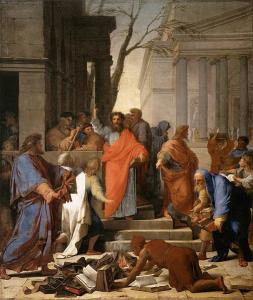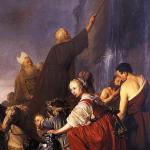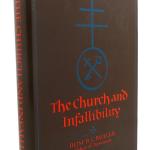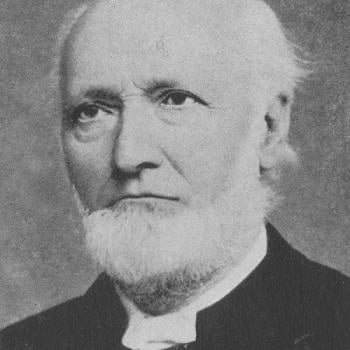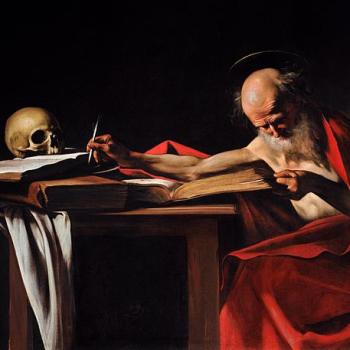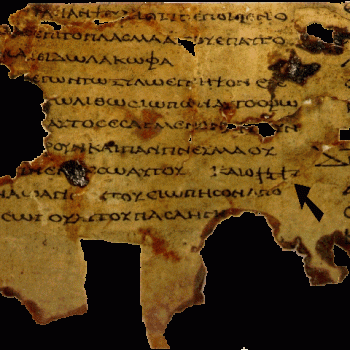1) Romans 16:23 (RSV) . . . Erastus, the city treasurer, and our brother Quartus, greet you. (cf. Acts 19:22; 2 Tim. 4:20)
In 1929, a gray slab of limestone was found in Corinth, near the theater. Separate pieces of the same inscription were discovered in 1928 and 1947 in other areas of the theater. The inscription reads: “Erastus in return for his aedileship laid (the pavement) at his own expense.” Related evidences in the same excavation revealed that this was the same person referred to by Paul. It was dated to A.D. 50. The Greek word that Paul used for “treasurer” (oikonomos) is equivalent to the Corinthian office of aedile. (1)
2) Luke 2:2 This was the first enrollment, when Quirinius was governor of Syria.
The name Quirinius appears on coins that he issued as governor of Syria, with the date “the 36th year of Caesar [Augustus]”: that is, A.D. 5/6. (2) An inscription dated A.D. 14 found in Antioch Pisidia known as The Deeds of the Divine Augustus refers to “when Publius Sulpicius (Quirinius) and Gaius Valgius were consuls.” Roman historian Tacitus noted in his Annals Book III that when Quirinius died in A.D. 21, Tiberius Caesar ordered the Senate to honor him with a public funeral. Jewish historian Josephus wrote in detail about the census of Judea around A.D. 6 that Quirinius conducted as the governor of Syria.
3) Roman, Greek, and Jewish References to Jesus
Josephus refers to Jesus (as the brother of James) (3), and other references include Suetonius in his Lives of the Caesars (4), Tacitus’ Annals (15.44), Thallus’ history of Greece from c. A.D. 52, Pliny the Younger’s epistle to the emperor Trajan (no. 96), the Jewish Talmud (Sanhedrin 43a), and the Death of Peregrine (11-13), by Lucian, a second-century Greek satirist. (5)
4) Acts 19:35 And when the town clerk had quieted the crowd, he said, “Men of Ephesus, what man is there who does not know that the city of the Ephesians is temple keeper of the great Artemis . . .?
In the late first century, likely during the reign of Domitian, Ephesus was honored for its role as being a seat of emperor worship and was designated with three other cities as neokoroi (“temple wardens”), though the term in Acts may have referred specifically to Artemis-worship. An inscription found in Ephesus, dated to A.D. 162-164, refers to the “patriotic city of the Ephesians, . . . temple-warden of the Augusti two times.” (6)
5) Acts 19:24 . . . a man named Demetrius, a silversmith, who made silver shrines of Artemis . . .
In the theater at Ephesus, a Greek and Latin inscription reported that a Roman official created a silver image of Artemis, for display during civic meetings in the theater. (7)
6) 2 Timothy 4:14 Alexander the coppersmith did me great harm . . .
Another inscription discovered in Ephesus (where Alexander the coppersmith lived) refers to “Diogenes the charkomatas” (“coppersmith”). (8)
7) 1 Corinthians 15:32 What do I gain if, humanly speaking, I fought with beasts at Ephesus? . . .
This is a sarcastic or otherwise non-literal proclamation from Paul that seems to be a reference to the historical reality of the city. Archaeologist McRay writes,
An inscription found on a part of the north wall of the stadium [in Ephesus] indicates that it was rebuilt during the reign of Nero. . . . A circular area at the eastern end was designated for gladiatorial fights and animal baiting. . . . Paul perhaps compared arena combat with opposition from “beasts” of a human sort . . . (9)
8) Acts 19:9 [Paul] . . . argued daily in the hall of Tyrannus.
Ekrem Akurgal contended that there was an auditorium (audeitorion) or lecture hall just east of the beautiful library in Ephesus, that was mentioned in a first-century inscription. (10) NIV, NRSV, NAB render this as “lecture hall.” KJV, Douay, and NASB have “school.”
9) Acts 17:18-19 Some also of the Epicurean and Stoic philosophers met him. And some said, “What would this babbler say?” Others said, “He seems to be a preacher of foreign divinities” — because he preached Jesus and the resurrection. And they took hold of him and brought him to the Areopagus, . . .
McRay observes (11),
Questions regarding the teaching of Paul, who had been speaking of “foreign divinities” (Acts 17:18), fell under the jurisdiction of the Areopagus, which had “surveillance over the introduction of foreign divinities,” according to Daniel J. Geagan. (12)
Encyclopedia Britannia notes in concurrence that the Areopagus at this time was “discharging significant administrative, religious, and educational functions.” (13)
10) Acts 18:12 But when Gallio was proconsul of Achaia, the Jews made a united attack upon Paul and brought him before the tribunal,
A bema, or raised speaker’s platform, was discovered in Corinth in 1935, and is very likely the place where Paul stood before Gallio (18:14). (14)
FOOTNOTES
1) See John McRay, Archaeology and the New Testament (Grand Rapids,. Michigan: Baker Book House, 1991), 331-332.
2) See Ralph Martin Novak, Christianity and the Roman Empire: Background Texts (London: Bloomsbury Publishing, 2001), 291.
3) Josephus, Antiquities of the Jews, Book XX, ch. 9, sec. 1. https://www.gutenberg.org/files/2848/2848-h/2848-h.htm#link202HCH0009.
4) Suetonius, Lives of the Caesars (“Claudius” 25): “Since the Jews constantly made disturbances at the instigation of Chrestus, he expelled them from Rome” (from Catharine Edwards’ translation [Oxford University Press, 2009], 184, 203).
5) See McRay, 154.
6) See McRay, 257-258.
7) See Barbara Levick, “Two Inscriptions from Pisidian Antioch,” Anatolian Studies 15 (1965), 58-59.
8) See McRay, 259.
9) McRay, 260-261.
10) Ekrem Akurgal, Ancient Civilizations and Ruins of Turkey, 2nd ed., (Istanbul: Mobil Oil Turk A. S., 1970), 161.
11) McRay, 309.
12) Daniel J. Geagan, “The Athenian Constitution after Sulla,” Hesperia, supp. 12 (1967): 32:50.
13) “Areopagus: Greek Council,” in Encyclopedia Britannia. https://www.britannica.com/topic/Areopagus-Greek-council.
14) See McRay, 333-334.
***
Practical Matters: Perhaps some of my 4,200+ free online articles (the most comprehensive “one-stop” Catholic apologetics site) or fifty-one books have helped you (by God’s grace) to decide to become Catholic or to return to the Church, or better understand some doctrines and why we believe them.
Or you may believe my work is worthy to support for the purpose of apologetics and evangelism in general. If so, please seriously consider a much-needed financial contribution. I’m always in need of more funds: especially monthly support. “The laborer is worthy of his wages” (1 Tim 5:18, NKJV). 1 December 2021 was my 20th anniversary as a full-time Catholic apologist, and February 2022 marked the 25th anniversary of my blog.
PayPal donations are the easiest: just send to my email address: [email protected]. You’ll see the term “Catholic Used Book Service”, which is my old side-business. To learn about the different methods of contributing, including 100% tax deduction, etc., see my page: About Catholic Apologist Dave Armstrong / Donation Information. Thanks a million from the bottom of my heart!
***
Photo credit: The Preaching of St Paul at Ephesus (1649), by Eustache Le Sueur (1616-1655) [public domain / Wikimedia Commons]
***
Summary: I document ten additional New Testament archaeological confirmations: all of which support the strong case of profound biblical historical accuracy & trustworthiness.


